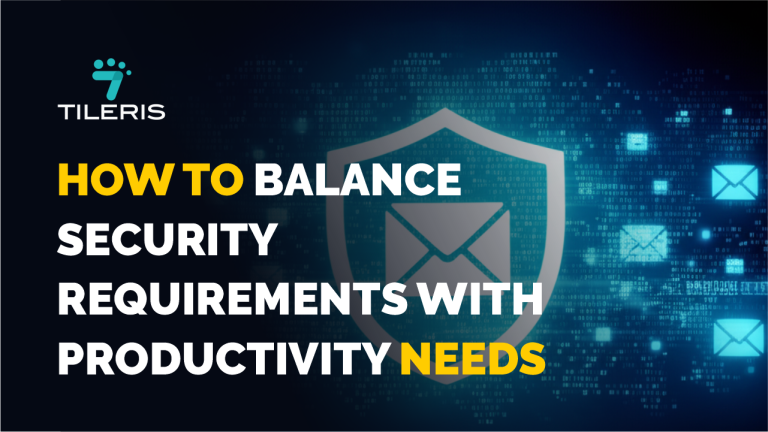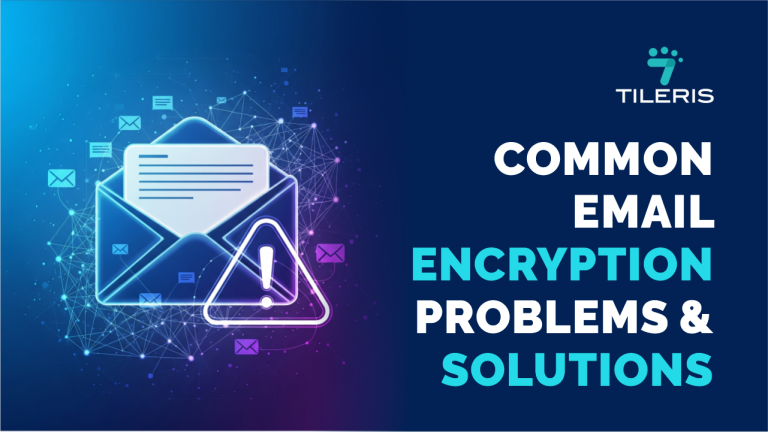Cryptocurrency Security Considerations
Introduction
The digital assets continue to gain mainstream adoption, cryptocurrency security is important and understanding how to secure your cryptocurrency has become paramount for investors, traders, and blockchain enthusiasts alike. Cryptocurrency security encompasses a complex ecosystem of threats, vulnerabilities, and protective measures that every digital asset holder must navigate. Unlike traditional financial systems with built-in protections and regulatory oversight, cryptocurrency transactions are irreversible, making security considerations critical to preventing permanent financial loss.
The decentralized nature of blockchain technology, while offering unprecedented financial autonomy, places the entire burden of security on individual users. This comprehensive guide explores the multifaceted landscape of cryptocurrency security, examining both technical vulnerabilities and practical protective strategies that can safeguard your digital wealth against evolving cyber threats.
The Cryptocurrency Threat System
Private Key Vulnerabilities
The foundation of cryptocurrency security rests on cryptographic key management. Private keys serve as the mathematical proof of ownership for digital assets, making them the primary target for malicious actors. When considering how to secure your cryptocurrency, understanding private key vulnerabilities is essential.
Private keys are randomly generated 256-bit numbers that must remain absolutely confidential. Exposure through poor storage practices, malware infections, or social engineering attacks can result in immediate and irreversible asset theft. The cryptographic strength of these keys relies on their randomness and secrecy, making proper generation and storage critical security considerations.
The Exchange-Based Security Risks
Centralized cryptocurrency exchanges, while providing liquidity and convenience, introduce significant security risks that contradict the decentralized principles of blockchain technology. Historical analysis reveals that exchange breaches have resulted in billions of dollars in losses, with notable incidents including the Mt. Gox collapse in 2014 and the more recent FTX bankruptcy in 2022.
Exchange security risks encompass both technical vulnerabilities and operational failures. Hot wallet compromises, insider threats, regulatory seizures, and liquidity crises all pose existential risks to funds held on centralized platforms. Understanding these risks is fundamental to developing effective cryptocurrency security strategies.
Social Engineering and Phishing Attacks
Social engineering represents one of the most prevalent threats in the cryptocurrency ecosystem. Attackers exploit human psychology rather than technical vulnerabilities, making these attacks particularly dangerous for users who may have implemented strong technical security measures but remain vulnerable to psychological manipulation.
Phishing attacks targeting cryptocurrency users have become increasingly sophisticated, employing domain spoofing, fake customer support interactions, and urgent security warnings to trick users into revealing sensitive information. These attacks often target the weakest link in the security chain: human decision-making under pressure.
Technical Security Blueprints
The Cryptographic Foundations
Cryptocurrency security is built upon proven cryptographic principles, primarily elliptic curve cryptography (ECC) and secure hash functions. Bitcoin and most other cryptocurrencies utilize the secp256k1 elliptic curve, which provides computational security equivalent to 128-bit symmetric encryption.
The security model assumes that generating the same private key twice is computationally infeasible, with odds approximately 1 in 2^256. This astronomical improbability forms the mathematical foundation that makes cryptocurrency ownership possible without central authority verification.
Hash functions, particularly SHA-256, provide additional security layers through address derivation and transaction integrity verification. Understanding these cryptographic foundations helps users appreciate why certain security practices are essential and how vulnerabilities might arise from implementation flaws rather than mathematical weaknesses.
Multi-Signature Security Architecture
Multi-signature (multisig) wallets represent advanced cryptocurrency security implementations that require multiple cryptographic signatures to authorize transactions. This distributed authorization model significantly reduces single points of failure and provides enhanced protection against various attack vectors.
Multisig implementations can follow different threshold schemes, such as 2-of-3, 3-of-5, or more complex arrangements. Each configuration offers different security and convenience trade-offs, with higher thresholds providing greater security at the cost of increased operational complexity.
The security benefits of multisig extend beyond simple key distribution. By requiring multiple independent signatures, these systems provide protection against device compromise, coercion, and insider threats while maintaining user control over assets.
Wallet Security Solutions
Hardware Wallet Architecture
Hardware wallets represent the gold standard for cryptocurrency security, providing air-gapped storage that isolates private keys from internet-connected devices. These dedicated security devices generate and store private keys within tamper-resistant hardware security modules (HSMs).
The security architecture of hardware wallets relies on secure element chips that provide hardware-level protection against both physical and remote attacks. Private keys never leave the secure element, with transaction signing occurring within the protected environment before returning signed transactions to connected devices.
Leading hardware wallet manufacturers implement additional security features including PIN protection, recovery seed backup systems, and secure firmware update mechanisms. Understanding these features is crucial when evaluating how to secure your cryptocurrency using hardware solutions.
Software Wallet Security
Software wallets offer greater convenience and functionality compared to hardware solutions but introduce additional attack surfaces through their connection to potentially compromised computing environments when it comes to Cryptocurrency security. Effective software wallet security requires careful consideration of the underlying operating system, application security, and network environment.
Modern software wallets implement various security measures including local encryption, secure key derivation functions, and hierarchical deterministic (HD) wallet structures. These features provide reasonable security for smaller amounts while maintaining practical usability for daily transactions.
However, software wallets remain vulnerable to malware, keyloggers, and other system-level attacks. Users must implement comprehensive endpoint security measures and maintain updated software to minimize these risks.
Paper Wallet Generation and Storage
Paper wallets provide offline storage solutions that eliminate digital attack vectors entirely. Proper paper wallet generation requires secure random number generation in an air-gapped environment, followed by physical security measures to protect the printed keys.
The process of creating secure paper wallets involves using verified software on isolated systems, ensuring proper printer security, and implementing secure disposal of any temporary files or printer memory. These technical requirements make paper wallets suitable primarily for long-term storage rather than active trading implying Cryptocurrency security.
Physical security becomes paramount with paper wallets, requiring consideration of fire protection, flood damage, theft prevention, and long-term durability. Many users implement multiple copies stored in geographically distributed locations to mitigate these physical risks.
Network Security Considerations
Blockchain Network Analysis
Understanding blockchain network security helps users appreciate potential vulnerabilities and make informed decisions about transaction timing and confirmation requirements. Network security encompasses consensus mechanisms, mining pool concentration, and protocol-level vulnerabilities.
Different cryptocurrencies implement varying consensus mechanisms with distinct security properties. Proof-of-work systems rely on computational resources for security, while proof-of-stake systems depend on economic incentives and penalty mechanisms. Each approach presents unique attack vectors and security considerations.
Network monitoring tools allow users to assess real-time security conditions, including hash rate distribution, confirmation times, and potential reorganization risks. This information helps users make informed decisions about transaction security requirements.
Transaction Privacy and Security
Transaction privacy directly impacts cryptocurrency security by limiting the information available to potential attackers. Public blockchain ledgers create permanent records of all transactions, potentially exposing user behavior patterns and account balances to analysis.
Privacy-enhancing techniques include coin mixing services, privacy coins, and layer-two solutions that provide varying degrees of transaction obfuscation. However, these techniques must be balanced against regulatory compliance requirements and potential association with illicit activities.
Understanding transaction graph analysis helps users appreciate how blockchain forensics can compromise privacy and security. Proper coin selection, address management, and transaction timing can significantly improve privacy without relying on third-party services.
Advanced Security Protocols
Zero-Knowledge Proof Integration
Zero-knowledge proofs represent cutting-edge cryptographic techniques that enable privacy-preserving verification of cryptocurrency transactions. These protocols allow users to prove ownership or transaction validity without revealing sensitive information.
zk-SNARKs (Zero-Knowledge Succinct Non-Interactive Arguments of Knowledge) and zk-STARKs (Zero-Knowledge Scalable Transparent Arguments of Knowledge) provide different approaches to implementing zero-knowledge systems with varying security assumptions and performance characteristics.
Integration of zero-knowledge proofs into cryptocurrency systems enhances both privacy and security by reducing information leakage while maintaining verifiability. Understanding these emerging technologies helps users evaluate future security enhancements and potential adoption strategies.
Layer-Two Security Architecture
Layer-two scaling solutions introduce additional security considerations while potentially improving transaction privacy and reducing costs. Lightning Network, state channels, and rollup systems each implement different security models with unique trade-offs.
Lightning Network security relies on economic incentives and time-locked contracts to ensure proper channel operation. Users must understand the implications of channel partner selection, routing privacy, and force-close scenarios when evaluating layer-two security.
Rollup systems provide scalability through off-chain computation with on-chain data availability or validity proofs. The security of these systems depends on the specific implementation details and the underlying layer-one blockchain security guarantees.
Operational Security Applications
Key Management Protocols
Effective key management forms the cornerstone of cryptocurrency security implementation. Professional-grade key management involves systematic approaches to key generation, storage, backup, recovery, and rotation procedures.
Key derivation hierarchies enable users to generate multiple addresses from a single seed while maintaining backup simplicity. BIP-32, BIP-39, and BIP-44 standards provide interoperable frameworks for deterministic key generation and wallet recovery.
Proper key management also includes secure backup procedures, geographic distribution of recovery materials, and periodic testing of recovery processes. These operational procedures ensure that security measures remain effective over time and across various failure scenarios.
Security Audit Procedures
Regular security audits help maintain effective cryptocurrency security postures by identifying potential vulnerabilities before they can be exploited. Personal security audits should evaluate all aspects of cryptocurrency storage and transaction practices.
Audit procedures include reviewing wallet software versions, examining transaction histories for unusual patterns, testing recovery procedures, and evaluating physical security measures. Documentation of security practices enables systematic evaluation and improvement over time.
Professional security audits for Cryptocurrency security may be appropriate for high-value holdings or institutional implementations. These comprehensive evaluations provide expert analysis of security architectures and recommendations for improvement based on current threat landscapes.
Regulatory and Compliance Methods
Legal Framework Analysis
Understanding the legal framework surrounding cryptocurrency security helps users navigate compliance requirements while maintaining effective protection strategies. Regulatory environments vary significantly across jurisdictions and continue evolving rapidly.
Anti-money laundering (AML) and know-your-customer (KYC) requirements impact privacy and security practices, particularly when interacting with centralized services. Users must balance compliance obligations with security best practices to avoid regulatory violations.
Tax reporting requirements may necessitate detailed transaction record keeping, which creates additional security considerations for data protection and long-term storage. Proper documentation practices must account for both tax compliance and operational security requirements.
Institutional Security Standards
Institutional cryptocurrency adoption has driven development of enhanced security standards and best practices that individual users can adapt for personal use when it comes to Cryptocurrency security. These standards often exceed basic security recommendations and provide comprehensive frameworks for risk management.
Custody solutions designed for institutions implement multi-party computation (MPC), hardware security modules (HSMs), and sophisticated access control systems. Understanding these approaches helps individual users evaluate enhanced security options and service provider capabilities.
Regulatory compliance frameworks for institutions provide insights into emerging security requirements and industry best practices. These developments often preview future regulatory expectations that may impact individual users.
New Emerging Threats and Countermeasures
Quantum Computing Implications
The potential development of cryptographically relevant quantum computers poses long-term threats to current cryptocurrency security implementations. Understanding these future risks helps users prepare for eventual cryptographic transitions.
Shor’s algorithm could theoretically break elliptic curve cryptography given sufficiently powerful quantum computers, potentially compromising all existing cryptocurrency private keys. However, current quantum computing capabilities remain far from this threshold.
Post-quantum cryptographic algorithms are under development to provide security against quantum attacks. Early adoption strategies may include diversification across different cryptographic systems and preparation for eventual protocol upgrades.
AI-Enhanced Attack Vectors
Artificial intelligence and machine learning technologies are being deployed by both attackers and defenders in the cryptocurrency security landscape. AI-enhanced attacks may include sophisticated social engineering, transaction pattern analysis, and automated vulnerability discovery.
Defense strategies must evolve to counter AI-enhanced threats through improved detection systems, behavioral analysis, and adaptive security measures. Understanding these emerging threat vectors helps users maintain effective security postures.
Machine learning applications in cryptocurrency security include fraud detection, anomaly identification, and predictive threat modeling. These tools can enhance individual security practices when properly implemented and understood.
Conclusion
Cryptocurrency security represents a complex, evolving discipline requiring comprehensive understanding of technical, operational, and regulatory considerations. Effective implementation of security measures depends on individual risk profiles, technical capabilities, and usage patterns, making personalized security strategies essential.
The irreversible nature of cryptocurrency transactions places ultimate responsibility on users to implement appropriate protective measures. While this responsibility may seem daunting, systematic application of proven security principles can provide robust protection against current and emerging threats.
As the cryptocurrency ecosystem continues maturing, security tools and best practices will evolve to address new challenges and simplify implementation for mainstream users. However, fundamental principles of cryptographic security, operational discipline, and continuous education will remain cornerstone requirements for safe cryptocurrency adoption.
Understanding how to secure your cryptocurrency extends beyond technical implementation to encompass ongoing vigilance, regular security assessments, and adaptation to changing threat landscapes. By maintaining comprehensive security practices and staying informed about emerging risks, users can participate in the cryptocurrency revolution while protecting their digital assets from loss or theft.
To take your cybersecurity to the next level, proceed to downloading our free security checklist, it’s packed with simple steps to help you stay protected online. And for more contents like this just head over to tileris.com.
If you’re looking for more hands-on support or more cyber security contents like this contact us, you can also request a free consultation with our AI agents, our experts are ready to guide you. Or, if you’d rather see how Tileris works in real time, go ahead and request a demo through our contact form.





